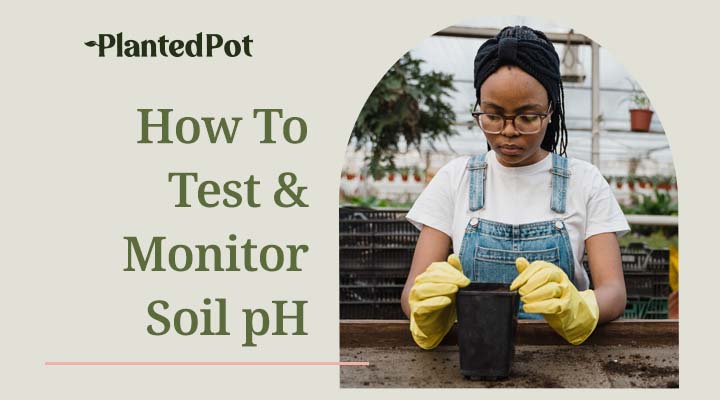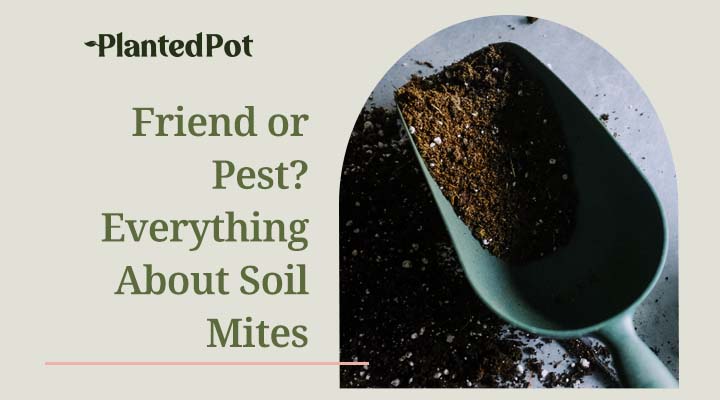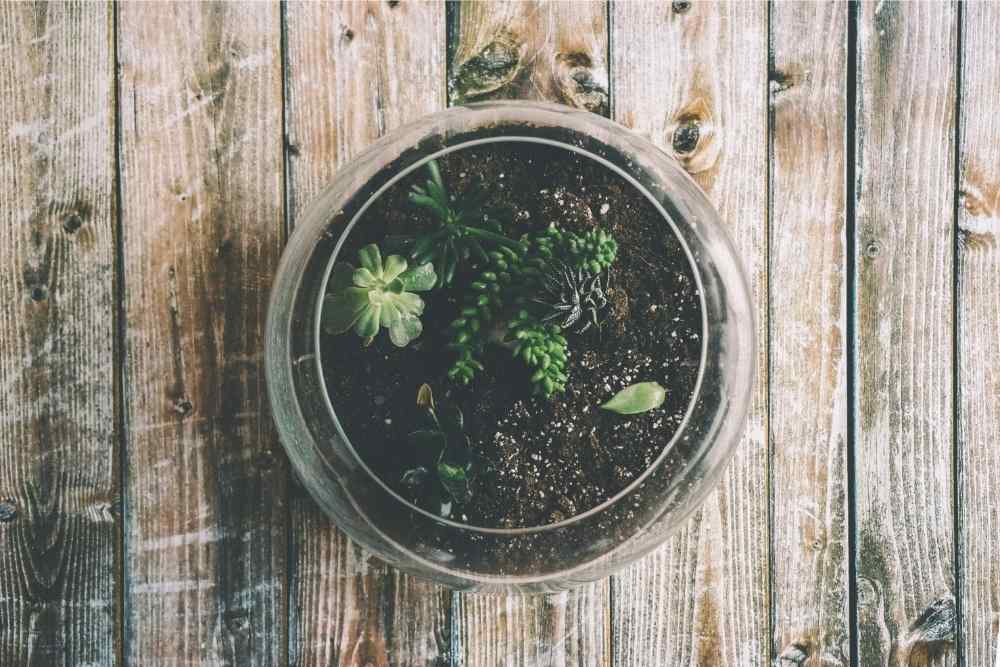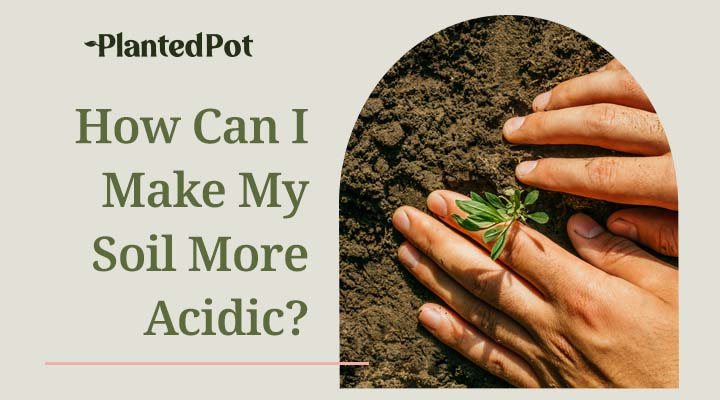
Soil Mites [Why They May Actually Be Great For Your Plant!]
Home / Soil Mites [Why They May Actually Be Great For Your Plant!]

Soil Mites [Why They May Actually Be Great For Your Plant!]
Soil mites might sound scary, but they are actually helpful microscopic bugs that make themselves at home in plants’ soil. They are harmless insects that feed on decaying plant parts to help keep the plant in good health. Though it might look like an infestation, these mites will leave on their own after consuming all the rotting plant matter!
Soil mites aren’t the most attractive on plants, and some plant owners may want to get rid of them. Some of you plant enthusiasts might be curious about these tiny bugs and how they interact with plants and nature. We’ll cover all you need to know about soil mites in this article, so keep on reading to learn about the world of these unique little bugs!
What Are Soil Mites?
Soil mites are anthropods that feed off decaying organic matter. There are many different species of mites, but the most common ones are called Oribatid mites. These tiny little mites are found almost everywhere on the planet, including Antarctica!
These tiny creatures are scavengers that are about 0.2-1mm long. Also known as beetle mites or turtle mites, these bugs are the most common type of mites you might find in your plants. They can be either white or brown, with six tiny little limbs coming out of the different segments of their bodies.
Soil mites hatch from eggs and then turn into larvae. They then grow into nymphs and fully mature into adult soil mites. The entire cycle can take a few months to a year, depending on certain conditions like the weather.
These mites, on average, can live up to one to two years, but in colder climates, they can live up to seven years. The tiny anthropods spend the majority of their lives residing in the top layer of soil.

What Causes Soil Mites?
A soil mite infestation can happen to any plant. Some of it has to do with the location and habitat of where you live. Soil mites are attracted to decaying matter and are more commonly found in compost posts.
The soil mites move slowly through the soil and eat through the following decaying organic matter:
- Rotten roots
- Old leaves and bark
- Fungi
- Algae
- Dead insects
- Tiny live worms
Some people live close to forested areas where the ground is littered with old leaves and dying plants. These locations are more likely to have soil mites roaming around than a person who lives in an apartment in the city surrounded by concrete and other buildings.
Cross-contamination is another way houseplant pests develop. It is common for people to use the same gardening tools for their indoor and outdoor plants. These critters are so small that a person might not notice them right away and accidentally expose them to inside plants. People might also bring mites home when they adopt a houseplant from a store or receive one as a gift.
Many gardens also use compost piles to fertilize their plants. Compost piles are like a buffet for mites who enjoy consuming all the decaying matter in the compost. Just a large handful of compost for your potted plants can contain hundreds of soil mites. If you keep your plants within close proximity of each other, beetle mites can invade your other plants as well.
How Do You Know What Kind of Soil Mites You Have?
Most species of soil mites are too small to view with the naked eye so you might need a magnifying glass to fully view them. With a magnifying glass, you can view small brown or white dots moving in the soil, which are most likely your Oribatid mites.
It can be tricky to identify and kill soil mites since there are other parasitic plant pests in the potting soil. Identifying what kind of mites are infesting your potted plants is not easy when they all look extremely similar.
Some people might notice issues with their indoor and outdoor plants, and sometimes these symptoms are associated with plant pests that feed off a living plant. Here are some common plant pests you might easily confuse with soil mites:
- Scale Insects: These tiny bugs latch onto the leaves and stems of plants and absorb their sap. It can cause the leaves to wilt and die. They can also increase the chance of sooty mold, a fungal infection.
- Spider Mites: If you notice webbing on your plant, chances are it could be spider mites. Like vampires, these arachnid-like mites feed off the nutrients of a plant that keep it healthy.
- Aphids: Aphids are destructive creatures that are hard to spot with the naked eye but can do a lot of damage to plants. They are small, soft-bodied insects that suck the sap and other liquid nutrients of the plant. Here’s how to get rid of Aphids in roots.
- Mealybugs: Sometimes appearing as white, cottony debris on plants, mealybugs are soft, wingless insects found in warmer climates. The symptoms from a mealybug infestation include leaf discoloration that can cause the plant to succumb to death.
Aside from looking for pests in soil and plants, make sure you provide your plants with the appropriate environment for optimal growth. Each plant is different, so you should make sure it is receiving enough indirect sunlight, has clean soil, is being adequately watered, and kept in room temperature conditions.
What Types of Soil Mites Are There?
There are close to 20 thousand species of mites, with tens of thousands of more still undiscovered or researched further. With so many species in this group of critters, scientists have identified four different categories to help classify these mites. Here are the four main groups:
Oribatei
Oribatid mites are the most common types of soil mites and the ones you are most likely to encounter. In addition to beetle or turtle mites, these microscopic creatures are also known as moss mites due to also being present on moss.
Beetle mites are highly adapted, and many different species with their group can adjust to dry and hot conditions, while others can be found in rainforests. They live their lives as scavengers feeding off dead plants and other decaying matter. Once you can identify these bugs, you can begin to get rid of soil mites in your plants.
Mesostigmata
Mesostigmata soil mites are another great contributor to the decomposition process of dead trees or plant material. They are only a few millimeters big and are brown or cream-colored. These mites get their name from the stigmata pattern near the middle of their body. Stigmata are little holes in an insect’s body that allow it to receive and breathe air.
Prostigmata
Within the family of prostigmata, some soil mites feed off of fungi that develop in the soil, while others are known to be predatory and eat the eggs of smaller insects. These bugs can be difficult to get rid of since they are microscopic. They also feed off decaying organic matter and algae. These mites have even been discovered in Antarctica! In some locations, they can be even more abundant than oribatid mites.
Astigmata
Astigmata mites are more commonly found in smellier areas, like fields of manure. Like the previously mentioned soil mites, astigmata enjoy feeding off decaying matter such as leaves and other material. These tiny critters do not have any stigmata in their exoskeletons. It’s common to find these soil mites in agricultural fields that are rich in nitrogen.
Can Soil Mites Damage My Plant?
Visually, it might not look pretty for your plant to have tiny crawlers all over its soil, but soil mites aren’t harmful to plants! In fact, they can be very beneficial to your outdoor and indoor potted plants. Here are some benefits of these mites in your indoor plants and outside gardens:
- Maintains Healthy Soil: Soil mites break down residue from other plants and animals. Even when the mites die, their decomposing bodies provide beneficial nutrients. Good soil allows the roots of plants to absorb nutrients better.
- Eliminates Harmful Bacteria and Fungi: Certain factors like too much water can attract bacteria and fungi. Some soil mites are predatory and eat the fungi that can negatively affect your potted plants and their roots.
- Improves Moisture Absorption: Getting rid of soil residue, bacteria, and fungal infection helps roots breathe easier and absorb water better.
If you don’t mind the appearance, keeping soil mites around can help your plant instead of damaging it.
Are Soil Mites Harmful to Humans?
Soil mites have a small chance of carrying eggs containing tapeworms and other bacteria that they can potentially transfer to humans. Nevertheless, there have not been any reports of these mites biting people. They may pose a health hazard if your home becomes infested, but this is very unlikely.
If you are trying to kill soil mites, make sure to wear gardening gloves to lower the chance of these bugs making physical contact with your skin. As an extra safety measure, make sure to sanitize your gardening equipment to prevent the spread of mites, other plant infections, and parasitic plant pests.
Should I Get Rid of Soil Mites?
Soil mites can be extremely helpful for plants since they act as natural fertilizers and defense mechanisms, so it might be better to keep them. However, if you have a fear of insects or are put off by their appearance, you can get rid of soil mites if you choose.
Ensure you have the right tools to help you get rid of mites from your indoor and outdoor plants. Soil mites are considered harmless to your plant, so even if you decide to get rid of them, your plant will not sustain any damage from an infestation if soil mites die.

How To Get Rid of Soil Mites
If you decide to get rid of soil mites, this section has you covered! You can purchase most of the tools you need at your local home improvement store or plant shop. Here are some ways plant parents can eliminate soil mites from their plants:
- Homemade sprays: You can mix either cinnamon, garlic, or a small amount of dish soap with water and add the mixture to a spray bottle. You can then spray the soil where there is an infestation. You can spray the plant at least once a day until you no longer see the mites roaming around your plant.
- Repotting: One way of getting rid of soil mites is by repotting the plant. Repotting allows you to remove the old soil that provides food for the mites. Your plant will also benefit from the fresh nutrients of fresh fertile potting soil.
- Insecticides: If you are inexperienced with repotting your plant, then going to the store to buy insecticides helps remove soil mites and other creatures that might harm your plant. Regardless of what brand you choose, make sure the pesticide contains pyrethrins. Pyrethrin paralyzes insects and ultimately kills them.
Final Thoughts – Soil Mites
Soil mites might get a bad rep for being unpleasant bugs crawling all over your plants. But it turns out that these tiny critters are more friend than foe. Staying informed about the different types of pests bugs in your plants will benefit you on your journey to becoming the ultimate plant parent. If you want to learn more about plants, check out Planted Pot!



